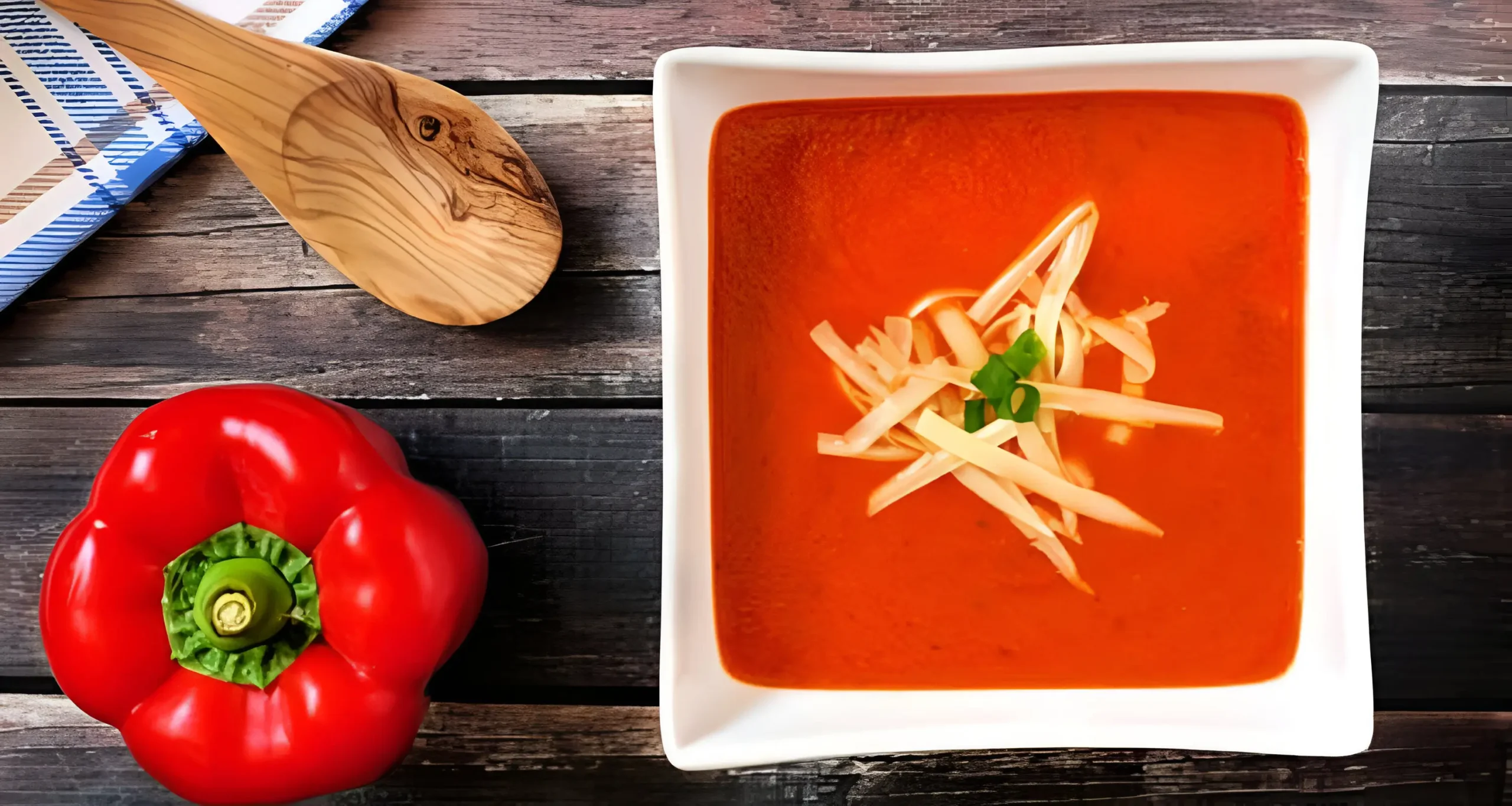Wonton Soup: 6 Health Benefits You Need to Know

Wonton soup is like a cozy, comforting hug in a bowl. It’s simple, comforting, and easy to make. Whether you love takeout or want to try making it at home, this dish is full of flavor and health benefits.
This guide will show you the health perks of wonton soup and how to make it often. You’ll learn why it’s good for protein, hydration, immune health, and weight control. Plus, you’ll find tips for making a real wonton soup or a quick version when you’re in a rush.
Think of this as your ultimate guide. Follow each part for background, nutrition facts, and easy ways to make it healthier. By the end, you’ll know how to make a delicious wonton soup that fits your taste and health goals.
Key Takeaways
- Wonton soup combines a comforting broth with lean protein and veggies for balanced nutrition.
- You can make a traditional wonton soup or a quicker, lower-sodium version based on your needs.
- Broth helps with hydration and digestion, while garlic and ginger boost immunity.
- Simple changes like using lean fillings, whole-wheat wrappers, and extra greens can increase nutrients without losing flavor.
- This guide provides step-by-step tips and easy wonton soup recipe ideas to help you cook or order smarter.
What is Wonton Soup and Why It Matters for Your Health
Wonton soup is more than just a meal; it’s a bridge to China’s culinary past and a healthful choice. Its roots are in southern China, where cooks wrapped small dumplings with pork and shrimp in wheat. The broth, made from chicken or pork, was flavored with scallion, ginger, and a hint of soy.
Origins and traditional ingredients
Traditional recipes fill thin wrappers with lean ground pork, shrimp, ginger, and scallions. The broth is light, low in fat, and rich in minerals. Some recipes add rice wine or sesame oil for extra aroma.
How modern versions differ and what that means nutritionally
Today, recipes might use ground chicken, turkey, or tofu instead of pork. Mushrooms and extra greens are also common. But, store-bought wrappers and instant broth can increase sodium and preservatives.
Choosing homemade or carefully selected store items helps control sodium and portion sizes. A simple recipe with lean meat, vegetables, and low-sodium broth keeps it light and flavorful.
Why you should consider Wonton Soup as a regular part of your meals
Wonton soup is versatile and can fit many dietary needs. You can add more protein, greens, or use vegetarian fillings. It’s also great for meal prep because it stores well and portions easily.
It’s quick to make, comforting when you’re sick, and can be made healthier with small changes. With a few tweaks, you can make a nutritious meal that supports a balanced diet.
| Aspect | Traditional | Modern/Convenience | Health Tip |
|---|---|---|---|
| Main protein | Ground pork and shrimp | Chicken, turkey, tofu | Pick lean cuts or tofu for lower saturated fat |
| Broth | Clear chicken or pork stock | Instant bases, richer stocks | Use low-sodium homemade stock |
| Wrappers | Fresh wheat wrappers | Store-bought or frozen | Check sodium and portion sizes on packaging |
| Typical issues | None when homemade | High sodium, added oils | Increase vegetables to boost nutrients |
| Best use | Authentic wonton soup for balance | Quick meals with mindful swaps | Follow a clear wonton soup recipe and adjust salt |
Wonton Soup as a Source of Lean Protein
Wonton Soup is a great way to add protein to your meals. It consists of a few dumplings served in a light, clear broth. This makes it light but packed with protein. You can make it even more protein-rich without losing its taste.
Typical protein sources used in wontons
Ground pork and shrimp are common fillings. Shrimp is often mixed with pork for better amino acids and fewer calories. Ground chicken or turkey are excellent options for a lower-fat alternative.
For vegetarians, tofu, tempeh, or TVP work well. They add protein and texture to your soup.
Protein content compared to other soups and light meals
A bowl with 6 to 8 wontons and broth has 12–20 grams of protein. The USDA says pork and shrimp are good protein sources. So, the amount of protein depends on the filling.
Wonton Soup has more protein than vegetable soups. It’s like a light meal, like a turkey sandwich or Greek yogurt with nuts and fruit.
How protein supports muscle repair and satiety
Protein is essential for muscle repair and recovery, making it especially important for active individuals. Adding protein-rich wontons after working out helps rebuild muscles.
Protein also keeps you full, which can help you eat less between meals. This can help with weight management.
Tip: For more protein, add extra shrimp, lean chicken, or edamame or tofu cubes to your soup.
| Common Wonton Filling | Typical Protein per 4 Wontons (g) | Calories per 4 Wontons | Best Use |
|---|---|---|---|
| Ground pork | 10–14 | 140–180 | Traditional flavor, richer mouthfeel |
| Shrimp (mixed) | 12–16 | 110–150 | Higher-quality amino acids, moderate calories |
| Ground chicken or turkey | 11–15 | 120–160 | Lower saturated fat, lean option |
| Firm tofu or TVP | 8–12 | 90–130 | Vegetarian choice, flexible seasoning |
| Mixed (extra shrimp + edamame) | 18–24 | 170–220 | High-protein bowl, post-workout meal |
Broth Benefits: Hydration, Electrolytes, and Gut Soothing
Wonton Soup is more than just a meal; it’s a way to stay hydrated and nourished. A clear broth is mostly water, which helps replace lost fluids. It’s light and easy to digest, perfect for when you’re not feeling well.
Broth also helps balance fluids and supports muscle function. Ingredients like sea salt, soy sauce, and vegetables add important minerals. Bone broth can add even more minerals, depending on how long it’s cooked.
Warm liquids can calm your stomach and aid digestion. A hot bowl of wonton soup can ease nausea and help your body recover. Traditional recipes often include ginger and garlic, which can help soothe the gut.
For a quick fix, try an easy wonton soup recipe. For deeper flavor, make a homemade broth. Either way, the warmth, hydration, and electrolytes in wonton soup make it a soothing and comforting option.
| Benefit | Primary Source in Wonton Soup | Practical Tip |
|---|---|---|
| Hydration | Clear chicken or vegetable broth | Drink broth between sips of water to restore fluids gently |
| Electrolytes | Sea salt, vegetables, bone broth | Add a small pinch of sea salt or a splash of low-sodium soy sauce |
| Digestive comfort | Warm broth with ginger and garlic | Use fresh ginger and simmer briefly for a soothing effect |
| Easy intake when unwell | Light wontons and soft vegetables | Make an easy wonton soup by using pre-made wrappers and quick-cook fillings |
| Mineral content | Bone broth or long-simmered stock | Simmer bones 6–12 hours for greater mineral extraction |
Wonton Soup and Immune Support from Vegetables and Aromatics

Wonton Soup is more than just a comfort food. It can also boost your immune system with the right ingredients. Adding simple vegetables and aromatics can make your soup a powerhouse of vitamins and nutrients.
Common immune-boosting ingredients: garlic, ginger, scallions
Garlic is packed with allicin, which fights off microbes. Just a few cloves can add a lot of flavor without extra calories.
Ginger is great for reducing inflammation and can even help with nausea. Grate it fresh for the best results.
Scallions are full of vitamin K and C, plus other nutrients that help your body use the soup’s goodness.
Vitamins and antioxidants provided by added vegetables
Leafy greens like bok choy and spinach are full of folate and vitamin A precursors. Adding a cup of mixed greens makes your soup much more nutritious.
Napa cabbage and carrots are packed with beta-carotene and vitamin C. Mushrooms add potassium and antioxidants that are good for your cells.
How small flavor additions can add meaningful micronutrients
Adding just one clove of garlic, a bit of ginger, or some greens can make a big difference. Fresh ingredients are better for your body than dried ones.
End your meal with cilantro or a squeeze of lime for extra vitamin C. These touches make your soup not only healthier but also more flavorful.
| Ingredient | Key Nutrients | Typical Amount per Serving | Benefit to Wonton Soup |
|---|---|---|---|
| Garlic (1 clove) | Allicin, small amounts of vitamin C | 1 clove | Antimicrobial phytonutrients; strong flavor at low calories |
| Ginger (1 tsp grated) | Gingerols, anti-inflammatory compounds | 1 tsp | Soothes digestion; adds warming spice |
| Scallions (2 tbsp chopped) | Vitamin K, vitamin C, phytonutrients | 2 tbsp | Fresh aroma and micronutrient boost |
| Bok choy / Spinach (1 cup) | Vitamin A (beta-carotene), folate, potassium | 1 cup | Raises overall vitamin density; adds fiber |
| Carrot (1/4 cup sliced) | Beta-carotene, vitamin A | 1/4 cup | Sweetness and antioxidant support |
| Mushrooms (1/4 cup) | Potassium, B vitamins, antioxidants | 1/4 cup | Umami depth with added micronutrients |
| Cilantro or Lime (garnish) | Vitamin C, flavonoids | Small garnish | Brightens flavor and aids nutrient absorption |
Low-Calorie Comfort: How Wonton Soup Fits Weight Management Plans
Wonton soup makes an ideal warm and comforting meal while remaining low in calories. You can adjust the portion and ingredients to keep it around 200–400 calories. Making it yourself means you know exactly how many calories you’re getting, helping you stay on track with your weight goals.
Calorie density and portion control tips
Restaurant servings can vary, depending on the broth and number of wontons. Limit yourself to six medium wontons and be mindful when measuring the broth. This helps avoid extra calories from oils or starches. Adding leafy greens and mushrooms will make your bowl bigger without adding too many calories.
Swaps and tweaks to lighten your bowl
Choose lean ground chicken or turkey instead of pork to reduce fat. Use low-sodium broth and steam the wontons instead of frying them. You can also use thin cabbage or zucchini ribbons instead of some wrappers to cut carbs and boost fiber.
Combining with balanced sides for a filling meal
Pair your wonton soup with a small portion of brown rice or a side salad with vinaigrette. This adds complex carbs and fiber. To boost the protein content, add edamame or a soft-boiled egg. These small changes keep your meal balanced and light, just like a good wonton soup should be.
Digestive Health Advantages of Homemade Wonton Soup
Making your own broth and filling lets you control what goes into your soup. This means less sodium and additives, making it gentler on your gut.
Benefits of slow-simmered broth
Broth simmered for a long time is packed with nutrients. It contains gelatin and amino acids that support gut health. Making your own broth lets you get these nutrients by choosing the right bones and veggies.
Fiber and texture from leafy greens
Adding greens like bok choy and spinach increases fiber. This fiber is good for regular bowel movements and a healthy gut. Wontons and broth together make a meal that’s filling and helps control blood sugar.
Practical tips to reduce sodium and additives
- Use low-sodium soy sauce or tamari to season without excess salt.
- Avoid bouillon cubes and concentrates that often contain high sodium and MSG.
- Strain your broth if you prefer a clearer, milder liquid that is easier on a sensitive stomach.
- Choose simple herbs like ginger and scallion to add flavor and digestive support without artificial enhancers.
Tips to adjust your wonton soup for easier digestion
For a light soup, use lean ground chicken or shrimp and steam greens. This keeps the soup nutritious and easy to digest. You can also make broth ahead and freeze it for quick meals.
Small changes, big impact
Choosing homemade wonton soup means fewer additives and more nutrients. Whether you make a classic recipe or a quick version, using fresh ingredients and controlling seasoning improves your digestion and gut health.
How to Make Wonton Soup Healthier: Easy Wonton Soup Tips and Substitutions
Small changes can make a big difference in a classic dish. This guide will help you make a wonton soup that’s lighter and packed with nutrients. You’ll keep the flavor just as rich.
Wrappers and fillings
Choose whole-wheat or low-carb wrappers for a healthier option. Or, use blanched lettuce or cabbage leaves for a wrapper-free version. For fillings, lean ground turkey, chopped shrimp, or firm tofu are great choices.
Add grated carrot and minced scallion for extra fiber and taste. Use egg white or a little cornstarch to bind instead of oil.
Broth choices and low-sodium techniques
Begin with low-sodium chicken or vegetable broth to manage salt levels. Making your own stock is best, as it extracts flavor without additives. Season with low-sodium soy sauce, rice vinegar, fresh ginger, and sesame oil for depth without salt.
Add kombu to vegetarian stocks for extra umami and minerals, reducing salt needs.
Boosting nutrition with simple add-ins
Quick-cooking greens like baby spinach or bok choy add B vitamins. Mushrooms, such as shiitake, also bring B vitamins. Grated carrot, snap peas, or corn add color and vitamins.
Boost protein with extra shrimp, shredded chicken, edamame, or a soft-boiled egg. Top it off with fresh cilantro, thin chili slices, or a splash of lime for an extra burst of flavor and improved nutrient absorption.
Practical tips for an easy wonton soup
- Make wontons ahead and freeze them on a tray, then store in a bag for quick weeknight meals.
- Divide the broth and wontons into measured portions to manage calories and prevent oversized servings.
- Use fresh aromatics instead of extra salt to keep flavors rich.
These tweaks let you enjoy Wonton Soup without sacrificing taste. Follow this advice to create a healthier, easy wonton soup that’s both nutritious and satisfying.
Authentic Wonton Soup vs. Quick Versions: Nutrition and Flavor Trade-offs

You can pick between a slow-made, authentic bowl and a quick, store-bought option. Each has its own benefits and drawbacks for taste, nutrition, cost, and time. Here’s what you can expect from homemade versions, how to find good convenience items, and how to make a healthy, tasty bowl.
Real wonton soup uses fresh wrappers, hand-made fillings, and a clear broth made from bones. The taste is rich and complex, thanks to ginger, scallion, and light soy. It’s also healthy because it’s made with little oil and includes greens or mushrooms.
Convenience options and how to choose healthier store-bought or restaurant choices
Frozen wontons and instant broths save time but can be high in sodium and preservatives. Look for low-sodium broths with simple ingredients like chicken, water, and veggies. At restaurants, ask for broth on the side, choose fewer wontons, and opt for steamed dishes. Also, ask chefs to use less oil.
How to replicate authentic flavor at home while keeping it nutritious
Begin with a homemade stock or a low-sodium store-bought base. Add fresh ginger, garlic, and scallion to enhance it. Make small batches of wontons with lean pork, shrimp, or tofu and mushrooms for flavor. Freeze them for an easy soup on busy days.
Small touches can make a big difference. Finish with sesame oil, a bit of soy or fish sauce, and plenty of herbs. This way, you can enjoy a real wonton soup taste while keeping calories and sodium in check.
Conclusion
Wonton Soup is a comforting meal that’s good for you. It has lean protein, hydrating broth, and immune-boosting spices like garlic and ginger. Making it the traditional way adds to its health benefits, while quicker versions can save time.
Start with a simple recipe using lean fillings and low-sodium broth. Prepare homemade broth and store wontons in the freezer for a fast and convenient meal. Adding more greens and veggies increases fiber and nutrients without extra calories.
Choose homemade or high-quality store-bought ingredients to control sodium and additives. Use the tips and tricks from this guide to make your soup both tasty and healthy. If you found this useful, share it with others! Include keywords such as wonton soup recipe, easy wonton soup, or authentic wonton soup to help more people discover it.
FAQ
What are the main health benefits of wonton soup?
Wonton soup is packed with lean protein from fillings like pork, shrimp, or chicken. It also has a hydrating clear broth with electrolytes. Plus, it includes immune-supporting aromatics like garlic, ginger, and scallions.Adding leafy greens and vegetables boosts fiber, vitamins, and antioxidants. This makes it a nourishing and comforting choice for many diets.
How much protein does a typical bowl of wonton soup provide?
A standard bowl with 6–8 wontons has about 12–20 grams of protein. This depends on the filling and portion sizes. Using shrimp or lean poultry increases protein while reducing saturated fat.You can add extra shrimp, shredded chicken, edamame, or a soft-boiled egg to raise protein further.
Is wonton soup good for hydration and recovery?
Yes. The clear broth is mostly water, helping to replenish fluids. It’s great for mild dehydration, after exercise, or when you’re under the weather.Broth also supplies sodium and small amounts of potassium and other minerals. These help with electrolyte balance. Warm broth is easy on the stomach and supports comfort and recovery.
Can wonton soup support immune health?
Wonton soup, enriched with garlic, ginger, and fresh vegetables, can help boost immune health. Garlic and ginger have antimicrobial and anti-inflammatory compounds.Vegetables like bok choy, spinach, and carrots add vitamins A and C, potassium, and antioxidants. Small flavor additions increase micronutrient density with minimal effort.
How can you make wonton soup lower in calories without sacrificing flavor?
Use lean fillings like ground chicken or turkey. Switch to low-sodium broth. Bulk up your bowl with vegetables like mushrooms and leafy greens.Steam wontons instead of frying. Limit added oils. Use umami-rich ingredients like shiitake mushrooms, a splash of tamari, and kombu to maintain flavor while cutting calories.
What are simple swaps to make wonton wrappers and fillings healthier?
Choose whole-wheat wrappers if available. Or substitute blanched cabbage or lettuce leaves for a low-carb option.For fillings, try crumbled firm tofu with mushrooms, lean ground poultry, or extra shrimp. Bind with a small amount of egg white or cornstarch instead of oil-heavy pastes.
Is homemade broth better than store-bought for digestion?
Homemade broth often has advantages. You control sodium and avoid preservatives. Prolonged simmering can release gelatin and amino acids like glycine and proline.These may support gut mucosal health. If you use store-bought broth, choose low-sodium, simple-ingredient options to reduce additives that can upset digestion.
How do restaurant or instant wonton soups compare nutritionally to authentic homemade versions?
Restaurant and instant versions often have higher sodium, added oils, and preservatives. Authentic homemade wonton soup uses fresh wontons and a slow-simmered clear stock with modest seasonings.This makes it typically leaner and more nutrient-dense. When eating out, ask for less oil, fewer wontons, or broth on the side to reduce calories and sodium.
Can wonton soup fit into a weight-management plan?
Yes. Broth-based soups are lower in calorie density. You can increase volume with vegetables, making wonton soup support fullness with fewer calories.Control portion sizes (for example, 6 medium wontons). Choose lean proteins. Pair the bowl with a small portion of whole grains or a salad for balanced energy.
Are there vegetarian or vegan wonton soup options that are also nutritious?
Absolutely. Use firm tofu, textured vegetable protein, or a mushroom-based filling for umami and protein. Make vegetable or kombu-based broth to provide minerals and depth.Add nutrient-dense vegetables like bok choy, spinach, and shiitake mushrooms. These boost vitamins, fiber, and flavor.
How can you reduce sodium in wonton soup without losing taste?
Start with low-sodium or homemade broth. Use low-sodium soy sauce or tamari. Season with fresh aromatics—ginger, garlic, scallion—and a splash of rice vinegar or citrus to brighten flavor.Add umami from dried shiitake, kombu, or a small amount of mushroom powder. This enhances taste without extra salt.
Can you freeze wontons or broth for quick healthy meals later?
Yes. Freeze shaped wontons on a tray until firm, then transfer to a sealed bag for long-term storage. Homemade broth freezes well in portioned containers or ice cube trays.This lets you assemble an easy wonton soup quickly. You retain control over ingredients and sodium levels.






